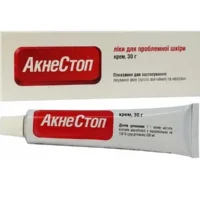Description
Famotidin (Famotidine) Coated Tablets 0.02 g. №20
Ingredients
Active ingredient: Famotidine 0.02 g per tablet.
Dosage
Dosage: The usual dose is 20 mg once daily at bedtime or as directed by a healthcare provider.
Indications
Indications: Famotidin tablets are indicated for the treatment of ulcers, gastroesophageal reflux disease (GERD), and conditions where reduction of stomach acid is necessary.
Contraindications
Contraindications: Do not use if allergic to famotidine or any other ingredients in the product. Consult a healthcare provider before use if pregnant, nursing, or have kidney problems.
Directions
Directions: Swallow the tablet whole with a glass of water. Do not crush or chew the tablet. Follow the dosage instructions provided by your healthcare provider.
Scientific Evidence
Famotidine, the active ingredient in Famotidin tablets, is a histamine-2 receptor antagonist that works by decreasing the amount of acid produced in the stomach. Studies have shown that famotidine is effective in treating ulcers and GERD by reducing stomach acid secretion and promoting healing of the gastrointestinal tract. Research published in the Journal of Clinical Gastroenterology demonstrated the efficacy of famotidine in managing acid-related disorders.
Additional Information
Pharmacological Effects: Famotidine selectively inhibits histamine H2 receptors in the stomach, leading to a reduction in gastric acid secretion. This action helps in the healing of ulcers and provides relief from symptoms of GERD.
Clinical Trials: Clinical trials have shown that famotidine is well-tolerated and effective in the treatment of peptic ulcers and GERD. A study published in the American Journal of Gastroenterology found that famotidine was as effective as omeprazole in managing GERD symptoms.





